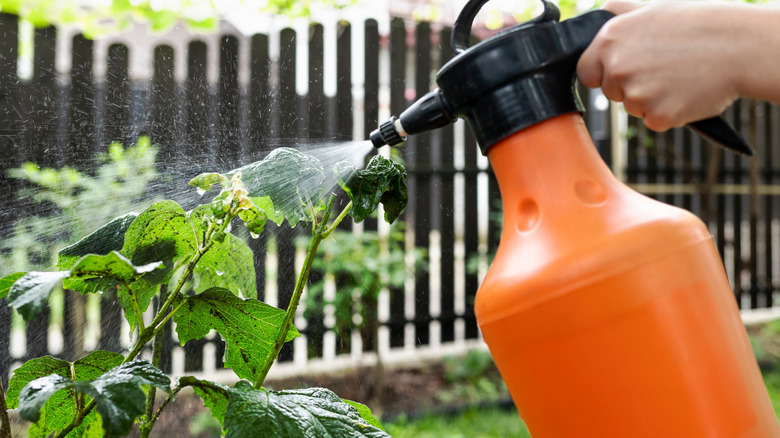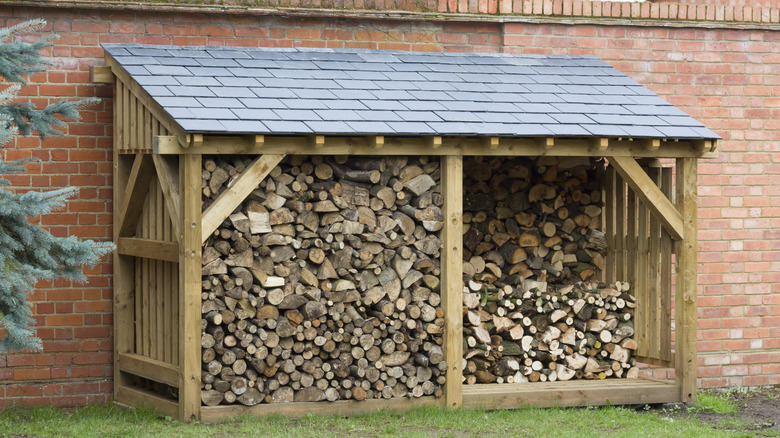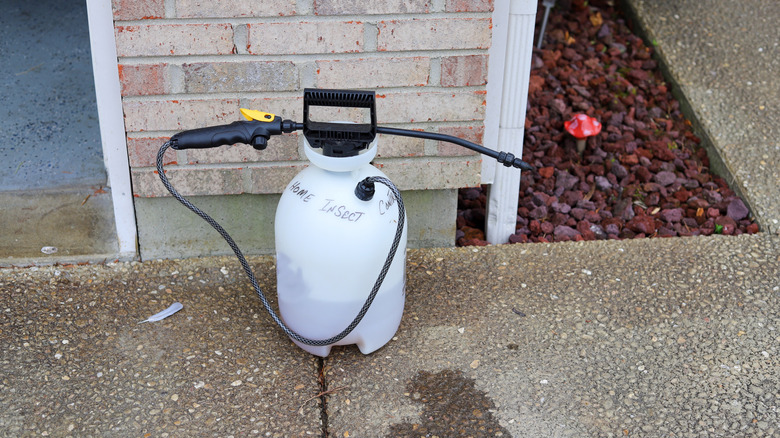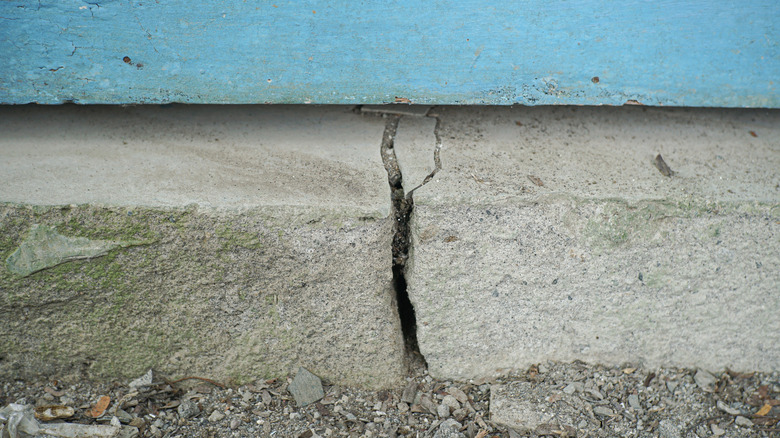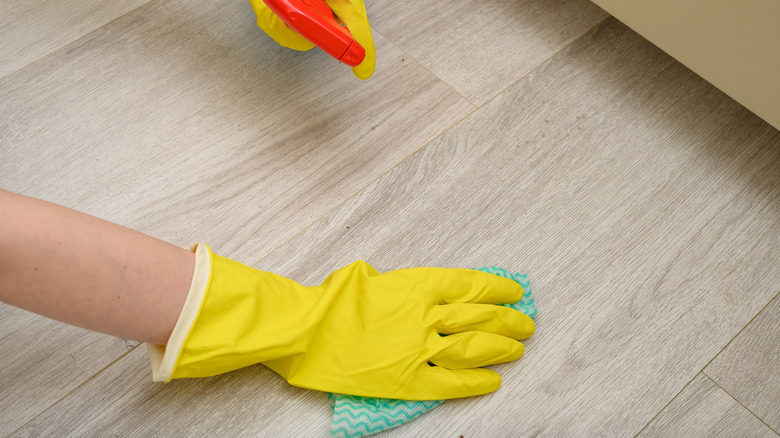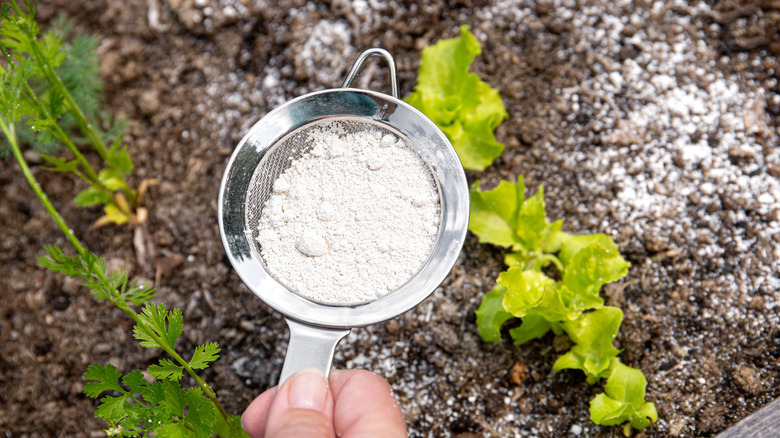12 Ways To Get Rid Of Ghost Ants
Thought to have been introduced to the United States via human trade and commerce, ghost ants are now firmly established here in a number of locations. They are common in various states, and can present something of a pest problem if allowed to nest indoors, which they are often prone to doing. One of the key issues facing homeowners is that ghost ant colonies can contain multiple queens and thousands of workers, and are known to frequently branch off (a process known as budding), dividing into multiple colonies. This often occurs when contact insecticides are used directly against a nest; in other words, instead of eradicating the infestation, such control methods can actually proliferate the problem.
So, how do you get rid of ghost ants? There are a few methods to control them. Some of them will help to eradicate the problem, provided that you're patient. Some measures fall more fittingly beneath the banner of "prevention" rather than "cure," and others still serve to confuse these invasive insects, disrupting their ability to move to and from the nest.
Treat indoor and outdoor plants for aphids
Did you know that ants in your garden could actually be a sign of aphids? They're attracted to the honeydew that sap-sucking insects like aphids and mealybugs secrete whenever they feed on your plants, in fact, this honeydew is one of several ant species' primary food sources. They favor it so highly that, if they're able to home in on a population of aphids, they'll actually begin to farm them. They'll physically herd them, help them to feed on the juiciest parts of your plants and defend them from predators, all in a bid to maintain a plentiful supply of honeydew.
With that in mind, you should check any plants around the foundations of your house for signs of aphids. You should also check any indoor plants, and wherever you find them, do your best to remove them. Now, it's important to say that this is very much a "preventative measure," and that it won't necessarily protect your home against an ongoing invasion of ghost ants. It will, however, give them one less reason to venture towards it, while helping to protect your precious plants from aphids' insatiable taste for sap.
Store firewood and other debris away from your house
Ghost ants are variable in terms of the places they like to nest. They'll happily do so in the soil and mulch in warm climates (more on this shortly), as well as in any debris you have lying around in your garden. Piles of logs represent another favorable spot for colonization, and in these, it's possible that other insects, like termites, will have dug ready-to-use tunnels that the ants will be only too happy to use. This is especially true since termites' burrowing leaves wood particles behind that can retain moisture, which this species of ant absolutely loves.
So, avoid a key mistake when storing your firewood. It's important to store it away from your house. If it's stored up against your foundations, and there happen to be even tiny gaps in your property, then ghost ants will have no issues whatsoever in crawling through them. Workers in this particular species are extremely small — usually about 1⁄16 inch in length. In other words, they're very well suited to finding their way indoors, so the fewer reasons you can give them to venture near your property and find their way in, the better.
Only mulch thinly around your property
Being especially susceptible to desiccation (dehydration), ghost ants favor damp areas, particularly those in warm or humid areas. In fact, the presence of moisture is one of their key requirements when looking for a nest site, which makes any areas with heavy layers of mulch or leaf litter prime nesting spots. With this in mind, and if you have flower beds immediately adjacent to your home, you should try to keep mulching to a minimum, and aim to ensure you clear away any leaf litter whenever it appears.
If you can't avoid mulching near your home, then you should think about which mulch is best to use in your garden. You could consider using an inorganic rock mulch, like irrigation rock or gravel; since this doesn't retain water, it's unlikely to provide the kind of moist environment that ghost ants love, and therefore less likely to harbor them. And if you must use organic mulch, then try to ensure there is clearance of at least 12 inches between it and the foundations of your home.
Create a barrier around your house with insecticide
You could be forgiven for immediately reaching for your favorite insecticide at the first sign of ghost ants, but it's strongly recommended that you use this method carefully. A much more considered approach is key with this species, and while stalking those that you can see like Rambo might feel satisfying, it's unlikely to solve your problem. Even if you've managed to find the nest, it's highly inadvisable to attack it head-on with repellent insecticide. Doing so can cause the inhabitants to panic and break into smaller colonies, effectively multiplying your problem rather than solving it.
In order for insecticide to be effective against the whole colony — without spooking it into budding — slow-acting, non-repellent insecticides are best. They require a patient, "bait and wait" approach. By laying non-repellent "bait," the ants who are carousing in your house will come into contact with it and, importantly, remain alive for long enough to take it back to the nest and spread it. More than that, they'll identify the bait as a food source, carrying it back to the nest to be eaten by everybody else in the colony — including larvae and the queen.
Prune back your plants
Pruning back your plants is one of several effective steps you can take to prevent ants from getting in your home. Having trees growing too close to your home is a common plant mistake that attracts ants indoors, and while uprooting and moving them away might not be feasible, there's nothing stopping you from pruning them back. Especially given the industriousness of ants, and particularly the small size of ghost ants that allows them to clamber through even the tiniest crevices, it's crucial to provide them with as few inroads to your interior as possible.
So, as well as checking your ants for aphids and creating a no-mulch zone around the perimeter of your property, you should also do a sweep around your house to make sure that no branches from shrubs or trees are growing too close to it. Any vines climbing your walls could also be worth reviewing and removing.
Pour boiling water into any nests
The first thing to say here is that there are a few reasons why you should think twice before pouring hot water over an ant's nest. One is that doing so also risks destroying any plants or grass in the surrounding area. The other is that it's not the most effective way to completely destroy an ant colony. That said, it can provide a short-term solution to their prevalence in your patch, effectively causing the nest to cave in and kill many of the ants currently inside. Of course, it doesn't account for any ants already out foraging. It's also unlikely to kill every ant inside, meaning that you may need to repeat the process several times in order to destroy the nest entirely. And don't forget, ghost ants are renowned for their budding tendency — by which they will break off into separate colonies when threatened — meaning that your actions may simply cause them to scatter and move into several new areas of your yard.
If you want to use this method, consider adding it to a wider, multi-pronged strategy. If you've guarded your home with an insecticide barrier, moved piles of firewood away from your property, and tweaked your mulching approach, regular use of boiling water on ghost ant nests could help to keep their numbers in check.
Check for entry points and seal them
Ghost ants are tiny, and can therefore squeeze through even the most unnoticeable cracks and crevices around your home. This makes it important to check your home's foundations and identify any potential areas that might allow ants to get inside. When you've found them, seal them, using caulk or another appropriate sealant. While you're at it, be sure to check your doors and windows and make sure that the seals are nice and snug when closed.
If you live in a brick house, it could be worth finding a way to block any weep holes, as these will provide a highly convenient access point for ants, too. You could sprinkle diatomaceous earth around them if they're at ground level (more on this tip later), you could use steel wool to plug them and therefore prevent ants from finding their way inside, or you could install dedicated weep hole covers, ensuring that any mesh is fine enough to stop such tiny insects.
Eliminate indoor food sources
This step is more about preventing an unwanted invasion rather than eradicating one that's already taken hold. Ghost ants, as well as favoring humid, damp environments, are similar to many other creatures in that they're attracted to areas where food is most abundant.
So, try to ensure food is kept to as few areas of the house as possible, and try to be as fastidious as possible when it comes to cleaning by sweeping and mopping any crumbs or spills when they occur. Even just a few drops of spilled sugary soda or grease will attract ghost ants if they happen to be in the vicinity. What's more, once they've found their way indoors, it's unlikely to take them long to find other unsealed food items in your house. Storing your food in sealed containers will stop them from getting in, and if you have recycling bags or boxes inside, washing food packaging will make them less attractive to any workers that come foraging for food.
Keep your home dry
As you by now know, ghost ants favor environments that are both humid and damp, which can raise serious questions about your kitchen and bathroom. Any leaky faucets within the warmth of your home's walls are sure to encourage them to make a home for themselves, so you should aim to get those fixed as a matter of priority.
It can also pay to ensure your rooms are well ventilated. In the kitchen, a decent extractor fan will help to mitigate against the steam and condensation that inevitably build up when you're cooking. The same can be said in the bathroom. While a nice, hot shower is what many humans like at the start or end of a long day, the moisture and dampness it creates in insufficiently-ventilated bathrooms also provides precisely what ghost ants are looking for.
Use soap and water to clean areas ants traverse
Soapy water — a simple mixture of your go-to dish soap and water — can be used to clean the scent trails that ghost ants use to find their nest. Otherwise known as pheromone trails, workers from the colony use these trails to navigate to and from the nest, and by cleaning them with soapy water, you can effectively disrupt their ability to come and go. This won't eradicate a colony that's already taken hold, however, if you spy trails of ants marching in your home early enough, you might just be able to throw them off the scent in time to prevent them from making themselves at home.
Some homeowners also recommend soap and water as an anti-ant spray, although evidence of this particular method appears to be largely anecdotal. If you'd like to give it a try, you can spray it anywhere you have seen ants. But a word of warning: if you think you've found the nest, try to avoid spraying too close to it. When under threat, ghost ant colonies are likely to "bud," a process that sees them break off into new, separate, smaller colonies, making your problem significantly worse, not better.
Spray trails with white vinegar
One of several common kitchen ingredients you can use for pest control, white vinegar can be mixed in a 1-to-1 ratio with water and used to spray areas where you've seen ghost ants. They tend to use the same trails over and over again, following the pheromones left by their friends, and by using vinegar, you can temporarily disrupt their comings and goings by disturbing this trail of scent.
Like with soapy water, spraying your white vinegar solution too close to a nest can cause budding, so try to only spray this solution along their pathways, rather than directly into their homes. White vinegar is also often touted as a contact insecticide — that is, one that kills the ants upon contact. However, it's unlikely to kill enough ants to be truly effective if you have an infestation inside your home. It might kill a few brave pathfinders ahead of a full-scale invasion, but if they're already in, then the best approach is to use non-repellent, slow-acting insecticides as bait.
Use diatomaceous earth
If you've noticed ghost ants following the same trails (and you'd prefer to avoid the smell of vinegar inside your home), then you could sprinkle some diatomaceous earth along their pathways instead. Made from fossilized algae, this coarse, granular earth removes the oils and fats from the outside of soft-bodied insects, the eventual consequence being desiccation and death. This solution is only likely to kill the ants that come across it, so it's best used in conjunction with other solutions that target the colony as a whole, like non-repellent insecticides. And if you do decide to try this approach, do it with caution. While diatomaceous earth is generally safe, it's very fine and very dry, meaning that it may cause discomfort if inhaled or if your skin is in contact with it for a long period.
It's best sprinkled along the ants' trails. If you've spotted ghost ants marching their way through your home, there's a good chance that they'll use that same trail over and over again, and that their friends will do the same. You can also sprinkle it around entry points (both inside and outside), along baseboards, and on windowsills — essentially, anywhere that you've seen them on the march. You could also use it as a perimeter barrier around the foundations of your house, aiming for a continuous strip at least six inches wide. Just be sure to reapply it after rainfall; diatomaceous earth only works when it's dry, so even a brief rain shower could render it useless.

